At the beginning of the year I set out on a quest to visit every beach in the south hams, so I thought I would update you on how this is going. As of the beginning of June, I have stepped foot on 24 beaches out of 60. So I have a little way to go! Whilst some visits were just for a quick dip in the sea, others I set out about exploring, and I thought I would share my experiences at Bigbury beach.
Bigbury beach is home to the only tombolo in the south hams, and no I am not referring to the fun raffle game where picking tickets out of a bucket might win you a prize! A tombolo is a unique geographical feature where thanks to the movement of sediment a beach turns into a spit which joins up to an island. In this case the tidal sandy causeway stretches out to Burgh Island, a small picturesque isle, home to wild flowers, bird life, the Pilchard Inn and the Burgh Island Hotel.
Exploring this beach came as part of my first overnight outing in my new van, staying at a campsite at Mount Folly Farm, a site with spectacular views across the sea and surrounding coastline. I have been to Bigbury beach on numerous occasions before, but my favourite time of year to visit is in May, thanks to the multitude of wildflowers and nesting seabirds.
With the tide mid-flow and going out, it was a perfect time to set out. Walking from the free parking down the short track, I arrived at the south of the beach at 7am and had it all to myself. The sun was shining and whilst some of the beach was in shadow, the freshly uncovered sandbanks and shoreline were shimmering in the freshly risen sunlight.
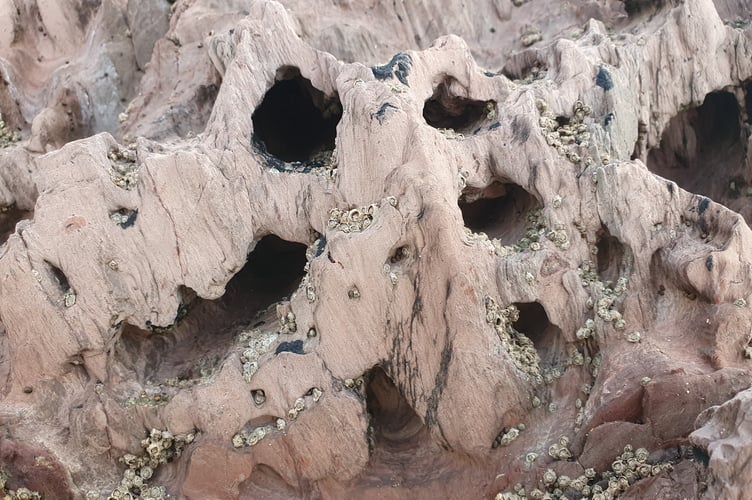
I stood for a little while taking in the scenery, and watched a number of seagulls going about their business. I noticed one greater black backed gull was in transition plumage, half juvenile mottled browns and beige, and half adult bright white and deep dark grey. I am used to seeing an array of seagulls, but had never seen one half and half before.
Nearby a herring gull had found a spider crab for breakfast and seemed unwilling to share it with its friends. It flew away from the other gulls, but every time it landed and started to tuck in, it was bombarded by them all trying to help themselves.
Further away in the shallow water another Great Black Back Gull was using its foot scuffle technique to rustle up some grub from the silty sand. Overhead with its beak full of dry vegetation, a Herring Gull flew off, no doubt in the direction of a good nesting spot.
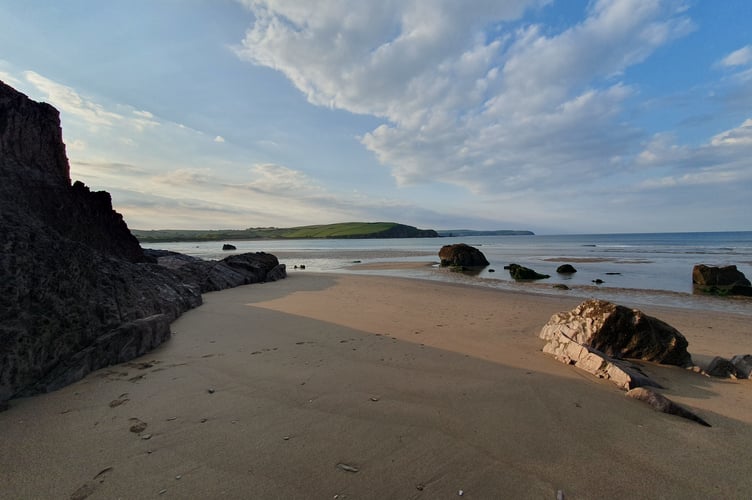
Gazing out to sea there appeared to be hundreds of seabirds near the horizon, tiny white specks flocking and diving where I presumed an abundance of fish were present.
I made my way around towards the mouth of the River Avon that runs into the sea between Bigbury and Bantham Beaches. Heading towards the river bank, the golden sunlight glanced off the cliff edge creating a crisp line between shadow and light across the sand in front of me, with the golden light also highlighting every ripple in the sand left by the receding water.
Turning towards the back of the beach, where the cliffs vary from red sandstone to flaky earth, I spotted a stone chat clinging to a twig on the clifftop singing away with a tune that was new to me. I was more used to their stone chink sounding call.
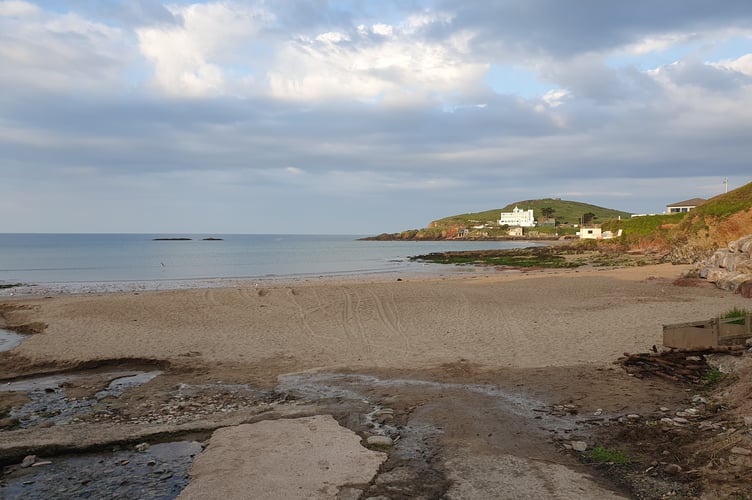
Whilst investigating the rocks more closely, I noticed that some of the red sandstone was particularly holey and I wondered what was weathering that particular stone. Usually rocks and stones are weathered through either physical processes e.g. being bashed by the sea and stones and being affected by varying temperatures or by chemical processes that include being dissolved by acid rain. These rocks were riddled with holes that looked more like animal burrows, but I was unsure what had made them.
The flaky earthy cliffs above were home pockets of plants and flowers, the little bobbles of thrift were just starting to come into peak, valerian with its multiple different colours brightened up the cliffs and oxeye daisies were scattered in between. Further on, rock samphire grew, with is succulent and edible leaves filling every crack and crevice in the rocks.
Wandering along the bottom of the cliffs, I found a decent Sainsburys shopping bag lying in the sand, and decided to adopt it, I proceeded to pick up litter as I walked back around the top of the beach. In amongst the scarce litter I found a beach toy, but instead of placing it in my rubbish bag, I went over to put it in the beach toy library I had spotted on my way down into the beach.
Returning to the northern end of this part of the beach, with the tide still preventing passage on the sand around to the causeway, I meandered my way through the slick green weed coated rocks to a set of steps that take you up and over the little headland, past the Venus Café and main car park, then down to the rest of the beach.
To be continued…

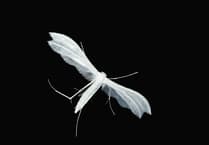

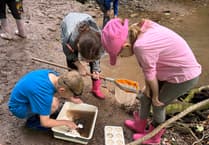
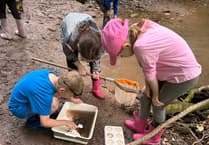
Comments
This article has no comments yet. Be the first to leave a comment.